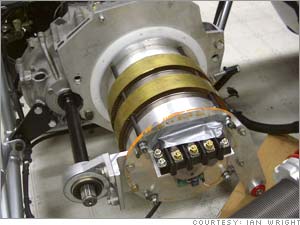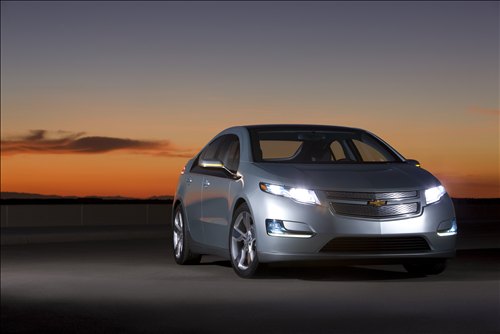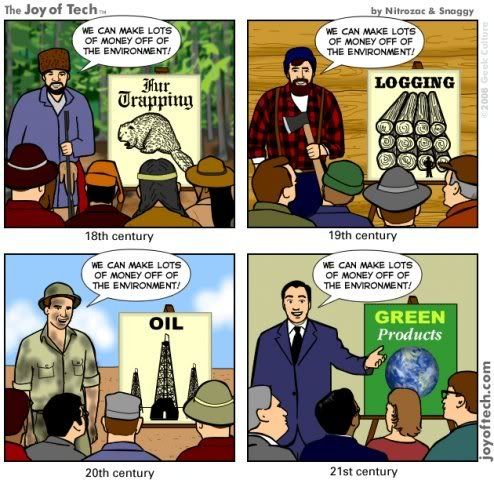Belatti wrote:Ciro, sometimes I really ask myself if you are in the correct forum.Do you like ICE engines at all? The noise, the smell? Something?
I know I'm in the correct forum, what I don't know is if I am in the correct epoch... sigh.
I apologize in advance for the length of the post, I think many of you don't have the time to read it, so here's the summary:
I estimate that KERS with 5 times the current energy level (2.000 KJ) allow you to produce 150 HP during the "important" parts of the race, thus giving you cars that require a smaller ICE engine and that are much faster in acceleration than current cars.
As Belatti says, you can get the same benefits from movable surfaces. BUT from the point of view of tyres and driver safety, what I would like to call "high-acceleration KERS (or HAC-KERS

) are pretty feasible, as the forward acceleration, which is what you improve, doesn't go over 1-2 Gs, compared with trying to extract more Gs from lateral acceleration through the use of "ailerons". The second, that is, use of ailerons, has always been alleged to be a more dangerous proposition in case of failure.
You can skip the rest.
THE REST:
I just talked a bit about the two new vehicles (hybrids and ultralights) competing with "pure-ICE" cars. I know ultralights for regular transportation sound like science fiction, so I won't delve into my "loner-hopes" in that field.
Let's concentrate on "hybrid strategy"... c'mon, Belatti, follow me for 5 minutes to see if we can conclude something.
If, I don't know, in 10 or 15 years people moves to hybrids, then, probably F1 cars will also use electric motors designed to handle the variations in engine optimum load. I'm not arguing
for that, I'm not proposing it, I'm just transcribing other people's predictions.
Actually, I'm also kind of dismayed when I "see" what I think Belatti sees in his "mind's eye": he imagines karts and racers in 2019, humming quietly around the track, driven by "happy valley" engines, making the noise of a vacuum cleaner, like house appliances.
He would prefer to hear the commanding tone of a properly un-balanced-toward-racing, gas guzzling, fuel burner, giant 3 or 4 liter V-12 that uses fuel even to
cool the engine.
Actually, Belatti and Modbaraban wouldn't mind to drive one of those "sub-optimal" machines, just to be able to feel the tremor of the engine coming to them through the steering wheel and to have plenty of power no matter the fuel. To the heck with Arctic penguins and polar bears!

On the other hand, as modbaraban points out, we have people devoted to earn money, profiting from the environment. Well, we have to confess that we have essentially
lived from the environment for the last couple of millennia. However, that's not the point.
I'm just pointing that
you have to manage the fuel consumption better than your adversaries if you want to win the race, which I think
is the point of this thread.
As xpensive points out you get high densities of energy from gasoline. However, fuel load represents a considerable racing "weight".
Now, with low budget, "free developing" teams, it seems possible for someone to figure that
with a smaller engine, along with "high energy" KERS, you could save racing fuel and engine weight. It all depends on the numbers.
The first thing you read in every pamplet about "How To Save Gas", is to drive less aggressively.
Of course,
how do you do that in F1? Isn't that stupid? As usual, some back-of-the-envelop numbers...

The crux of the issue: how much fuel do you save and how much energy you have to carry "on-the-KERS" to save it.
To answer alelanza's question, here you have a hard-to-find (at least for me!) Volkswagen TDI graph of torque vs rpm vs fuel consumption (actually, specific power consumption). The max torque you get at low rpm, so the circle shows that what alelanza says is true, at least for this engine: torque divided by rpm has a maximum where the engine has a lower specific consumption, that is, it is more efficient (less grams of fuel per Kw-hour).
Notice how flat is the "Brake specific fuel consumption" graph:

According to EPA this is what you get from such a flat consumption, diesel modern engine, when used in family cars in the real world:

I'm assuming that F1 cars have a similar profile, which is a very conservative assumption. F1 is not using turbocharged diesels at relatively low rpm. Drag losses are higher.
Notice that the TDI is famous for its "flat curve": the car is at optimum consumption in the range of normal use, predicted speeds (let's say, from 30 to 60 mph).
Actually, most of the "devices" of the car are for saving gas, from the gearbox to the carburetor to the shape of the body. To make this "fuel vs speed" curve as flat as possible.
From that graph, I estimate quickly that out of that optimum range (from 5 to 30 mph and from 60 to 75), the engine uses 1.5 times the "minimum" fuel rate (the maximum value of 30 mpg in the last graph goes down to 20 mpg average).
Let's say that the racing car goes "out of range", at slow curves and very fast straights, for 40% of time and that it uses
only 2 times the gas it uses when in "regular use" (because it's less efficient than the TDI engine). How do a Speed-vs-Time graph of an F1 car looks like?
Speed vs time for Albert Park. Reca made this graph from the sound of the engine.

How much energy should the KERS handle to drive the car through those peaks and valleys?
Here is a crude worksheet I made ages ago. Notice I estimate the energy to go from 130 to 250 in 4 seconds (figures I took from the previous graph, third peak from left to right):

Notice the figure in the red box: 660.000 joules, to go from 130 to 250 in a current F1 car (without power for overcoming drag or rolling resistance, just the "inertia power").
Thanks to Reca's graph I can show it happens in four seconds. It fits nicely with the current regulations: 6 seconds and 400 KJ, isn't it?
Notice also the (crude, I imagine) power budget: 220 Hp goes toward inertia and 110 HP goes toward aerodynamic losses. We're talking about acceleration out of slow curves.
How many of those valleys you have during the race? From Reca's graph, I count 6 complete "pushes to the metal" (I consider peaks 5 and 6 in this graph to be just one).
We're talking of 24 seconds (six times four seconds), six "doses" of 600.000 Joules, it means 3.6 MJ. That's 9 times the power of current KERS. This allows you to narrow the working rpm for the ICE engine.
At that "regime" you take advantage of the large torque of electric engines, to overcome inertia.
These motors are pretty small for its power and torque, here you have the one for the Wrightspeed Atom I showed in the previous post: this thing delivers more torque than a Ferrari, for the love of Pete.

Actually, you do not need 9 times the energy: you are not going to "shut down" the ICE engine. You can use it to provide, let's say, 60% of the power. The other 40% is provided by the electric motors. You shave more or less 150 HP out of the power needed to overcome inertia, that I estimated in my worksheet.
Let's say I estimate (again) that with KERS 5 times more efficient than the current ones, the recovered braking heat becomes significant for your racing power needs. We only need 500% more energy density. Is not that far away, it can happen.
Nowadays KERS are an "overtaking device". At some point in the future they could become a more important part of your fuel
and engine design strategy. I guess this will happen at some point in the relatively near future. And I think that's where the "green" F1 is pointing: mechanical efficiency, as miguel said.


















